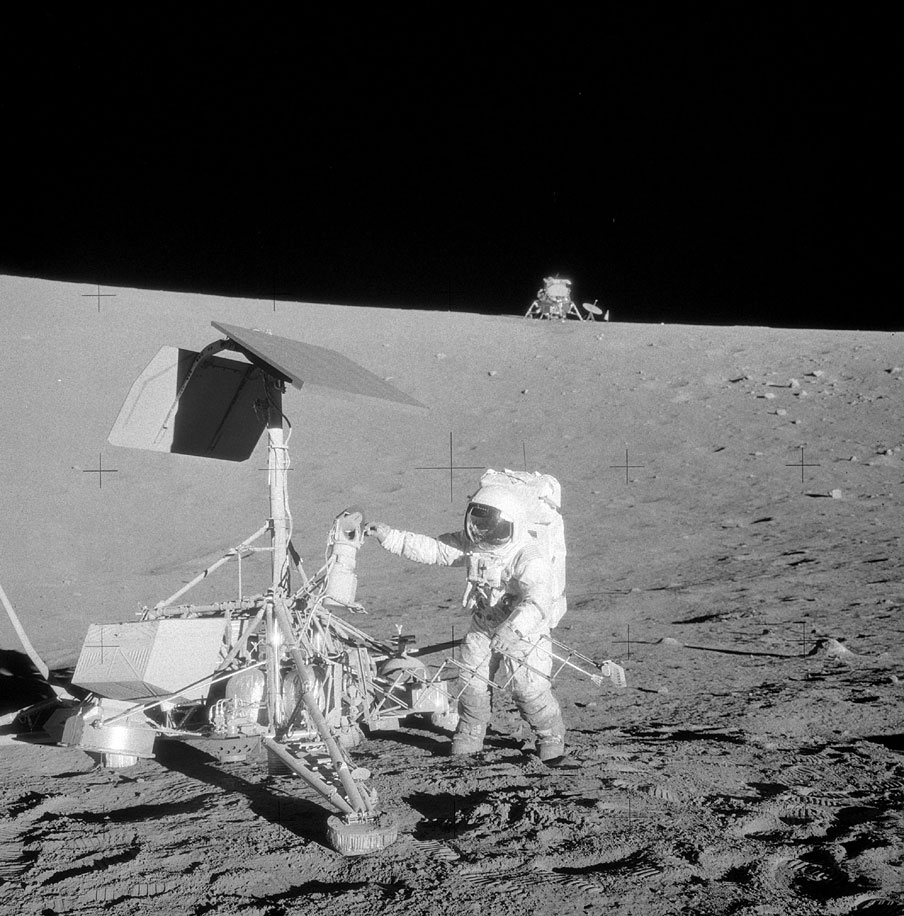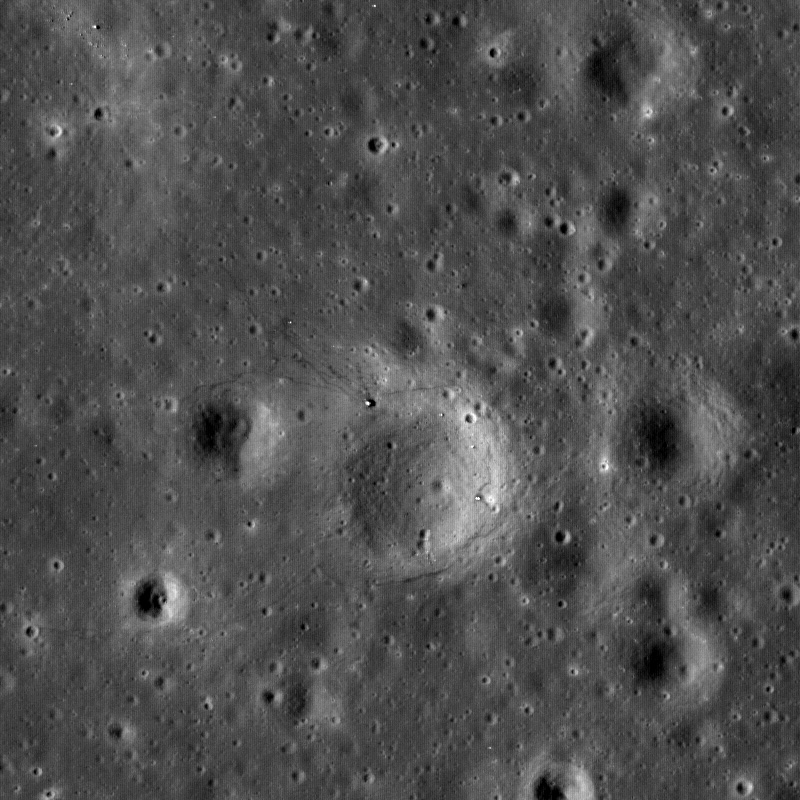
Apollo 11 proved to be a great success - the United States landed a man on the Moon and returned him safely to the Earth. At this point Kennedy's challenge had been met, and NASA could get on with the business of exploring the Moon. Next up was honing the Lunar Module's (LM) ability to make a pinpoint landing. Many of the future landing sites were in areas with rough terrain, meaning that the LM would have to come in steeply and set down within a few hundred meters of a designated point to achieve future mission objectives. The conservative engineering and safety constraints imposed on Apollo 11 were still in effect for the Apollo 12 landing, dictating an equatorial site on a flat mare surface.
Within those constraints the Surveyor 3 landing site in western Oceanus Procellarum (3°11'51" south latitude, 23°23'8" west longitude) was selected for Apollo 12. Of course, landing within walking distance of the now still robotic lander (operated from 20 April 1967 to 3 May 1967) would prove the pinpoint landing capability and allow the astronauts to return parts from the Surveyor for engineering assessment. The Surveyor 3 site also provided the opportunity to sample ejecta from the Copernicus crater impact, and what appeared from crater counts to be relatively young mare basalt.
Pete Conrad (Commander) and Alan Bean (LM Pilot) piloted Intrepid to a landing within 200 meters of Surveyor 3 on 14 November 1969. During their brief stay of thirty-one and a half hours, the two astronauts performed two extra-vehicular activities (EVA), each a little under four hours in length.
On the first EVA they deployed an Apollo Lunar Surface Experiment Package (ALSEP), which returned scientific data directly to the Earth for over seven years. Next, the explorers headed to the northwest to collect soil and rock samples. In all they collected about about 15 kg of lunar samples on this first EVA.
The next day Conrad and Bean headed out on the first lunar geologic traverse. They traveled west, skirting around Head crater, then south to Bench crater. At both locations the astronauts collected rock and soil samples and photographed the interiors of the two craters. After Bench their furthest point (~400 m) from the LM was Sharp crater. Their next goal was a rendezvous with the Surveyor 3 spacecraft, some 450 meters to the East. They extensively documented the condition of the Surveyor and collected hardware samples for terrestrial analysis, providing crucial data for present-day designers of lunar surface hardware.
The Surveyor landed on the interior slope of what was later called Surveyor crater. There was some worry that as the astronauts removed parts for return to the Earth the spacecraft might slide downhill so they always stayed upslope. The iconic image of the Apollo astronaut examining the Surveyor with the LM in the background reminds us of the important role that both robots and humans can play in planetary exploration.
In all, the Apollo 12 crew returned over 32 kg of lunar samples. From these precious samples scientists learned that the Copernicus crater impact occurred some 810 million years ago; four different types of local basalts were sampled with ages much younger than those from Apollo 11, and a small sample of highlands rock previewed the complexity of the lunar highlands to be sampled on later Apollo missions. All in all Apollo 12 was an incredible success, and it paved the way for the science missions yet to come.
Surveyor 3 only waited 2 years for a visitor - when will a new generation of explorers return to an Apollo site? Such a trip is way overdue! The Moon beckons...
See if you can spot Intrepid in the complete LROC NAC frame (M104662862R) on YouTube.
Published by Mark Robinson on 3 September 2009



